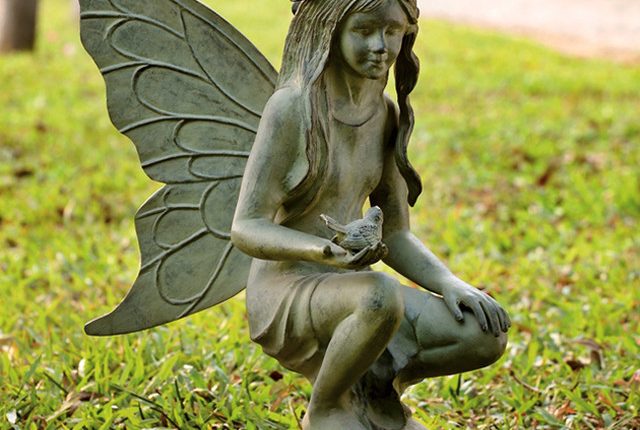Finding the Right Sculptures for You
If you are someone who spends a lot of time in the garden, chances are you have some idea of the features that will make your garden work for you. While your checklist could cover many options such as a pergola or water feature, you know that your garden is not complete without at least some sculptures or ornaments in place.
That’s because sculpture at its simplest is designed to provide pleasing forms in your garden so that you have a way of marking and emphasizing spaces and contrasts. It also heightens interest by creating focal points and adding an element of surprise.
To many, finding the right kind of sculpture to add can be a daunting task. Most people tend to think of sculpture as bearing a traditional appeal. Still, the truth is sculptures can be used to add not only an interest, but it can do so much more by imbibing some humour and romance to a specific niche you want to be noticed by your guests.
The fact is with what is available today, and it is easy to make your garden more inviting and appealing if you can choose the right sculptures to add to your garden’s form and function. The sculpture should reflect your taste while taking into account the style and size of your garden. If you are not sure what sculptures will work for you, think of the following as guidelines to help you choose the right one that will add a fit to the garden.
Sculptures Should Add Character
While you may have a dream garden in mind that contains all the exotic must-haves, you can still make your garden work with some features in place, and one of that includes the use of sculptures. Gone are the days when people used traditional sculptures to add form.
This could include truly large and heavy pieces which do not work any longer in today’s modern setting. What you need are sculptures which incorporate well into a modern setting and can create movement and stillness in the garden, poke an element of fun and surprise, or point to favoured niches in your garden like the pool or pond.
Let’s say; you have decided to use a geometrical sculpture as a way of directing interest to your planned niche. You can perch the sculpture atop a pedestal which when contrasted against your ornamental grasses, helps those who pass it to stop and reflect and then digest the rest of the landscape. As you reflect on the sculpture, you might find a point to admire that invokes a feeling of appreciation for what follows next.
Sculptures Should Direct Attention
It doesn’t matter what sculpture you purchase. You can buy a small finial or a large sculpture like a life-size statue to add to your garden. What counts is the reason for its presence and the impressions it conveys to you and your guests. A sculpture can do a lot like attracting attention to the end of a pathway or breaking up the features of your garden to points that demarcate and protect your private grounds. A sculpture that marks the end of a path may, for instance, remove attention on what’s hidden behind the tall hedges you have included to protect your family’s private interactions. Setting a sculpture that sits at the end of a directed pathway removes the attention on the tall hedges and instead directs the guests to explore what’s hidden at the end of the pathway which may point to an enclosed courtyard or pool.
Sculptures Should Add Movement or Stillness
Sculptures should be placed to create a visual impact so that when you look at it, it creates an impression with all the other scenic highlights considered. You do not need to make it stand out so prominently. Sometimes, sculptures create the most favourable impressions when they are chanced upon giving you the idea of stillness or movement. This can happen with placing them as part of the greenery so that when you chance upon them, you might be stuck at the sight of the sculpture a little girl’s face peeping at you. A figurative sculpture of such sort can look interesting but use one too many and chances are they could lose their effect.
Sculptures Should be Safe
One of the most important considerations when acquiring a sculpture is safety. If the sculpture has parts sticking out of it, you will want to ensure that it does not get in the way of children who are running around. You also do not want to accidentally tip it over or have it land on you especially if it is one that weighs 200 lbs or more. As such, consider setting up your sculpture on level ground to protect it from causing unpleasant accidents. One of the ways you can ensure that it sits on level ground is to set it up on a concrete base for support.
You should also consider mounting the sculpture to the ground, so it does not move around with strong weather conditions. Once this has been done, you can add accents like rocks or pebbles around the sculpture to enhance its appeal against the larger landscape. You can also nest it into a group of beautifully designed flora to make it stand out. If you invest in a bronze sculpture, you can expect it to patina beautifully as the surrounding accents age along with it.
It can be quite an adventure when it comes to adding art to your garden because it is a way of expressing yourself. Choosing sculptures can be fun as it provides the background for a well-thought-out landscape. There are also many types of sculptures you can choose from in the marketplace with pieces that are made from all sorts of materials like wood, concrete, marble, steel and aluminium.
However, you should always use sculptures with discretion because if you add too many, you might have them competing with the plants for attention and if they are too big, they could add an awkward effect to the rest of the landscape. Just remember that your garden is an extension of your home with its instinct demand for space and accents. The way you plan your garden is a reflection of what lives indoors and sculptures will certainly add the visual impact you need for your garden.

